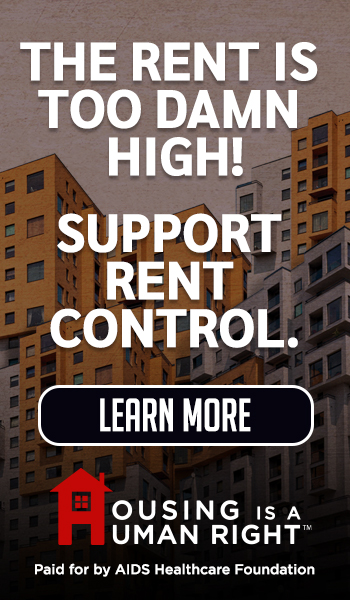Comments
iAUDIT! - Over the past few months, there has been a lot of news coming from San Francisco about changes in homelessness programs. In November, Dan Lurie, a self-billed moderate, won the mayoral election over incumbent and on-again, off-again progressive, London Breed. Lurie ran on a slate of “common sense” policies, including reemphasizing public safety and homelessness policy reform. Since taking office, Lurie has declared a state of emergency over the opiate epidemic, making it easier to approve contracts for treatment centers. His “Breaking the Cycle’ initiative set 100-day, six-month, and one-year goals to address the city’s persistent problems in coordinating effective homelessness solutions. Most of the goals are consistent with his “treatment first” approach, where homeless people are encouraged to seek treatment for their substance abuse and mental health issues as part of the shelter/housing process. His policies have been viewed by advocates for homelessness reform as a practical and compassionate alternative to the history of failure under Housing First programs.
Praise and criticism of Lurie’s efforts have come from across the political spectrum. Housing First advocates have called his policies cruel and a new “war on the unhoused”. Those on the right say the changes don’t go far enough and are in many ways just repackaging other unsuccessful programs. Some say he’s as disingenuous as his predecessor, London Breed, who often vacillated between permissive and get-tough policies depending on public opinion. His policies have caught the attention of reformers in Los Angeles, who look to San Francisco’s attempt to reshape homelessness programs as a potential model for LA.
Both cities share the same problems. As I’ve noted before, audits in San Francisco have found weak contract management and a lack of coordination among providers. Auditors also found a lack of reliable data to measure program performance. These problems mirror reports and audits in Los Angeles. If San Francisco can reform its programs, perhaps there is hope for LA.
But are San Francisco’s homelessness programs undergoing true restructuring or is Lurie merely engaging in political theatre? Of course, any program driven by an elected leader will have an element of political posturing. That’s not necessarily bad; presenting programs in ways that appeal to the electorate can ensure public support. But there is a fine line between effective programming and showmanship.
San Francisco’s homelessness programs have elements of both real change and posturing. Lurie ran as a political outsider, free of the influence of special interest groups. (Lurie is a scion of the Levi Strauss empire and started Tipping Point, a nonprofit that funds homelessness, education, and employment programs around the Bay Area). He needs to prove he can make a clean break with the old ways, so there is an element of public relations stunt in initiatives like his fentanyl emergency order. Like Rick Caruso in LA, Lurie promised the quick provision of more interim housing units to support his efforts to be more aggressive moving people off the streets.
There are reasons to believe Lurie’s commitment goes deeper than mere politics. His Breaking the Cycle program calls for “re-procurement of health and homelessness contracted services”’ which is a bureaucratic way of saying providers can no longer depend on endless no-bid renewals for funding. He also realizes San Francisco doesn’t exist in a vacuum and wants to build regional partnerships to create a consistent service model across the Bay Area. One of the more interesting elements of his plan is an effort to adopt an “adaptive spending model” to assess program performance and steer funding to the most effective programs. As we know from the court-ordered assessment, funding of Los Angeles’ homelessness programs is process-based; as long as providers complete the required processes, they are paid. An adaptive funding model would be a major departure from current policy here, and a potential threat to entrenched nonprofits that benefit from the current system.
Lurie and his supporters may also have the political winds at their backs. Despite its inability to produce positive outcomes, Housing First has enjoyed almost 30 years of support from presidential administrations of both parties. But the Trump administration and its new Secretary of Housing and Urban Development, Scott Turner, have not been shy about questioning Housing First. Their motivation may be more political than practical, but one of the reasons local governments continue to use Housing First is that HUD will only fund homelessness programs that meet its criteria. The state of California, in turn, has made Housing First its official policy since 2016. If federal funding dries up, state and local governments will be forced to find more cost-effective alternatives. Regardless of one’s opinion of the current occupant of the Oval Office, or of his policies, any challenge to Housing First should be welcome, provided there is a willingness to fund alternative programs rather than halt funding altogether.
Mayor Lurie is also challenging the other pillar of accepted homelessness policy: Harm Reduction. His Breaking the Cycle order calls for reassessing the distribution of fentanyl smoking supplies and emphasizing evidence-based treatment and recovery strategies. Harm Reduction began as a life-saving program during the AIDS epidemic because it provided clean needles to reduce disease transmission. From there, it expanded to supplying other paraphernalia, along with addiction recovery services. In many places like San Francisco and LA, it devolved into merely supplying users with paraphernalia with no counseling, under the assumption users would seek assistance once they built trust relationships with Harm Reduction staff. As Christopher LeGras described in an article last year, Harm Reduction has become little more than a program that distributes free drug supplies with no counseling. As he details, local health officials in LA insist there is scientific evidence supporting Harm Reduction, but they never produce the relevant studies.
Likewise, in San Francisco, Harm Reduction became a program supporting open-air drug markets that became centers for crime and overdose deaths. The Voice of San Francisco revealed a recorded meeting from December 2023, where San Francisco’s Director of Behavioral and Mental Health met with nonprofit leaders to discuss strategies defending Harm Reduction. Rather than a serious discussion of harm reduction’s merits, the meeting was more about how to “sell” Harm Reduction to a skeptical public, and how nonprofits could ensure a continuing flow of revenue for their programs. The Voice of San Francisco followed that article with a chilling peek inside a Harm Reduction site sponsored by a church in the city’s Mission District. A reporter posed as a drug user to gain access to the site and witnessed disengaged staff casually passing out drug use kits, with no mention of recovery services. The reporter witnessed a “safe sleeping space” strewn with garbage, where residents rifled the backpacks of sleeping clients and drug use was common.
One statistic that tells us much about Harm Reduction in LA is the Department of Health’s proud announcement that the number of overdose deaths have “plateaued” because of the wide distribution and use of Naloxone. While every human life saved is a victory, the news should be placed in context. The Health Department has nothing to say about the number of people diverted to or successfully treated in recovery program. The press release also neglected to mention overdoses continued to account for nearly half of all deaths among the unhoused. The brag about the use of Naloxone is a little like a fire department saying just as many houses caught fire as the years before, but we put them out really fast. The real goal should be to prevent fires. We must ask if the object of Harm Reduction is to save people from overdoses, or to prevent them in the first place. Perhaps Mayor Lurie’s emphasis on treatment will answer that question.
Dan Lurie took office just a few months ago. It will take time to see what, if any, effect his reforms will have on homelessness, or how substantive they really are. But at least he’s trying, and not merely defending the status quo, as we’ve seen in Los Angeles for years.
(Tim Campbell is a resident of Westchester who spent a career in the public service and managed a municipal performance audit program. He focuses on outcomes instead of process in his iAUDIT! column for CityWatchLA.)






